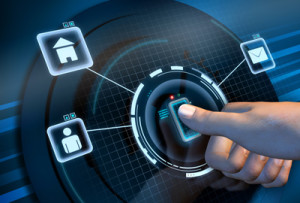 According to the Department of Homeland Security, access control is integrated security technologies that helps prevent victimization through asset monitoring, intrusion detection, video surveillance, and restricted areas. Private security companies put heavy emphasis on access control because of its importance to complete security. Physical access control systems are necessary to protect assets and cyber access control systems are critical for protecting sensitive information.
According to the Department of Homeland Security, access control is integrated security technologies that helps prevent victimization through asset monitoring, intrusion detection, video surveillance, and restricted areas. Private security companies put heavy emphasis on access control because of its importance to complete security. Physical access control systems are necessary to protect assets and cyber access control systems are critical for protecting sensitive information.
Assets Need Access Control
Think of how a safe works – you have to enter a code or spin a dial to unlock it. This is access control. Simply put, your assets are a giant target for somebody else. Regardless of the size of your company, you are at risk. Assets need to be protected. Access control systems provide protection in many forms, such as active, passive, physical, and cyber.
Active Access Control
Active access control systems are constantly being monitored by a person who is either on-site or off-site. A private security officer confronting the delivery vehicle entering the property is an example of on-site active access control. An individual overseeing camera footage and locked door entrance data of a client is an example of off-site active access control. Active access control systems include a person actively applying the access control security technology.
Passive Access Control
Passive access control systems are security systems which automatically record data and are coded to perform specific functions. For example, requiring a key code entrance to enter a locked room is a form of passive access control because nobody is actively monitoring that device. The information from these access control systems can be saved to view later. This data can be crucial in aiding investigations from any wrongdoings which may have occurred.
Employee Access Control
All of your employees do not need to have access to everything all of the time. Every employee should not be able to access other employees’ and clients’ personal information, such as social security numbers or bank account numbers. This information needs to be physically and digitally safeguarded. Access control can safeguard from employees who try to learn more than they should be about others.
Cyber Access Control
Computers, networks, databases, and programs need to be married with some type of access control. This could be as simple as requiring a password or as complex as a programming code. Nowadays, personal information and sensitive data are stored electronically on devices, which are connected to networks. These networks need to be monitored because hackers will try to test if they can successfully get in without being detected. Active and passive access control both work well in the cybersecurity field.
Data Storage
The best access control systems store data. This data is 100% useable in the case where an investigation needs to take place. All of this data can be easily retrieved by the owner of the system. Whether this database is actively monitored or passively collecting information, it is important to ensuring a safe and secure business and work environment.

